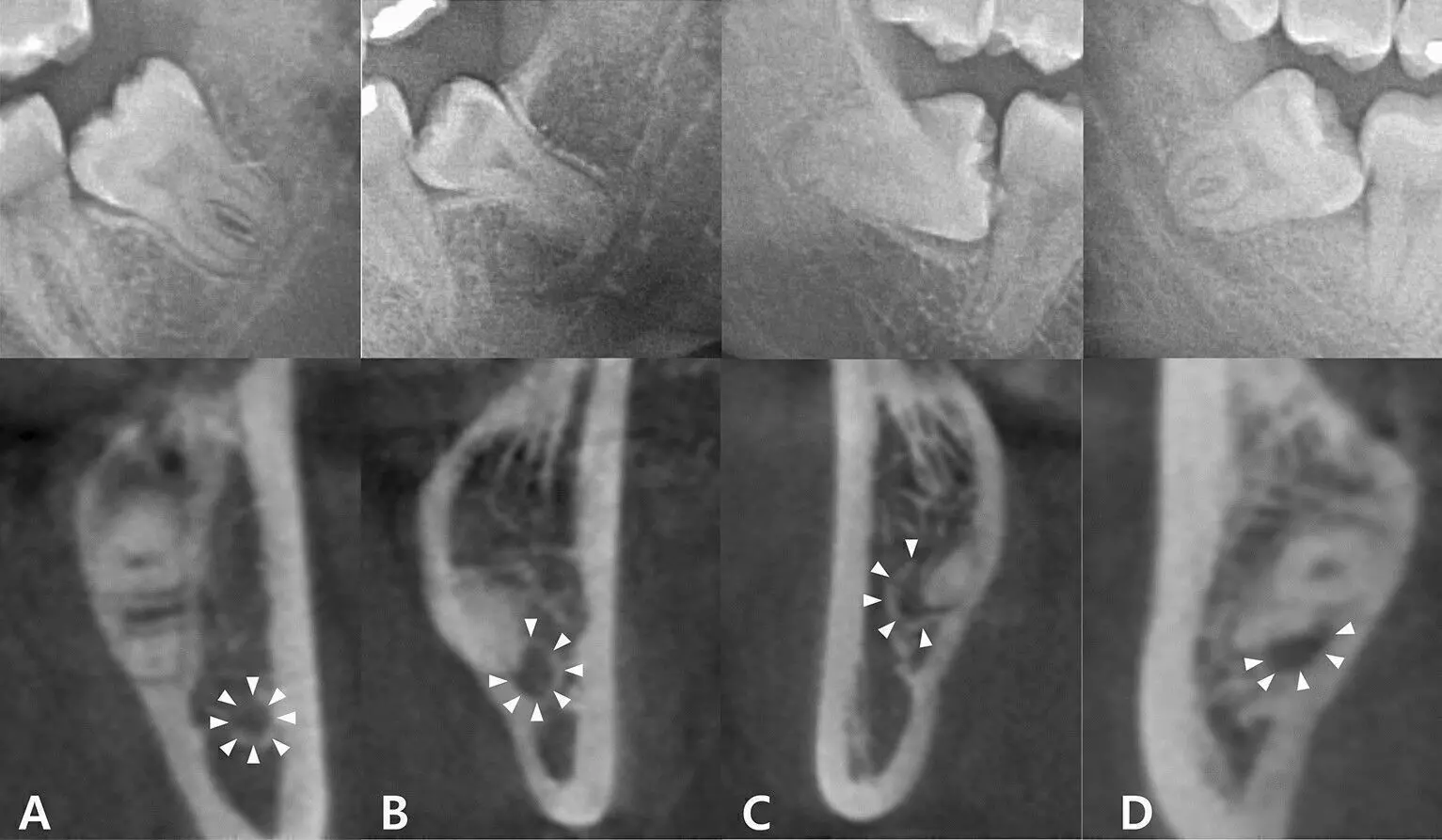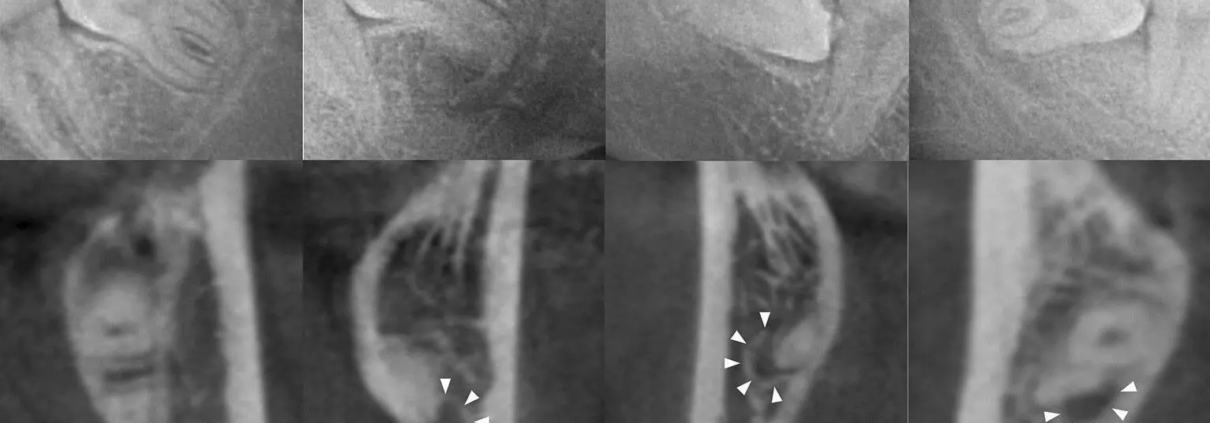AI-powered 3D models based on CBCT may predict injury risk to Inferior alveolar nerve after third molar extraction: Study

AI-powered 3D models based on CBCT may predict injury risk to the Inferior alveolar nerve after third molar extraction suggests a study published in the Journal Of Dentistry
A study was done to compare a three-dimensional (3D) artificial intelligence (AI)- driven model with panoramic radiography (PANO) and cone-beam computed tomography (CBCT) in assessing the risk of inferior alveolar nerve (IAN) injury after mandibular wisdom tooth (M3M) removal through a within-patient controlled trial. From a database of 6,010 patients undergoing M3M surgery, 25 patients met the inclusion criteria of bilateral M3M removal with postoperative unilateral IAN injury. In this within-patient controlled trial, preoperative PANO and CBCT images were available. At the same time, 3D-AI models of the mandibular canal and teeth were generated from the CBCT images using the Virtual Patient Creator AI platform (Relu BV, Leuven, Belgium). Five examiners, blinded to surgical outcomes, assessed the imaging modalities and assigned scores indicating the risk level of IAN injury (high, medium, or low risk). Sensitivity, specificity, and area under the receiver operating curve (AUC) for IAN risk assessment were calculated for each imaging modality.
Results: For IAN injury risk assessment after M3M removal, sensitivity was 0.87 for 3D-AI, 0.89 for CBCT versus 0.73 for PANO. Furthermore, the AUC and specificity values were 0.63 and 0.39 for 3D-AI, 0.58 and 0.28 for CBCT, and 0.57 and 0.41 for PANO, respectively. There was no statistically significant difference (p>0.05) among the imaging modalities for any diagnostic parameters. This within-patient controlled trial study revealed that risk assessment for IAN injury after M3M removal was rather similar for 3D-AI, PANO, and CBCT, with a sensitivity for injury prediction reaching up to 0.87 for 3D-AI and 0.89 for CBCT.
Clinical significance
This within-patient trial is pioneering in exploring the application of 3D AI-driven models for assessing IAN injury risk after M3M removal. The present results indicate that AI-powered 3D models based on CBCT might facilitate IAN risk assessment of M3M removal.
Reference:
Fernando Fortes Picoli, Rocharles Cavalcante Fontenele, Frederic Van der Cruyssen, Iraj Ahmadzai, Trigeminal Nerve Injuries research group, Constantinus Politis, Maria Alves Garcia Silva, Reinhilde Jacobs. Risk assessment of inferior alveolar nerve injury after wisdom tooth removal using 3D AI-driven models: A within-patient study, Journal of Dentistry, Volume 139, 2023, 104765, ISSN 0300-5712, https://doi.org/10.1016/j.jdent.2023.104765.
(https://www.sciencedirect.com/science/article/pii/S0300571223003512)
Keywords:
AI-powered 3D models, CBCT, predict, injury risk, Inferior alveolar nerve, third molar extraction, Artificial intelligence; Cone-beam computed tomography; Panoramic radiography; Nerve damage; Wisdom teeth, Fernando Fortes Picoli, Rocharles Cavalcante Fontenele, Frederic Van der Cruyssen, Iraj Ahmadzai, Trigeminal Nerve Injuries research group, Constantinus Politis, Maria Alves Garcia Silva, Reinhilde Jacobs



